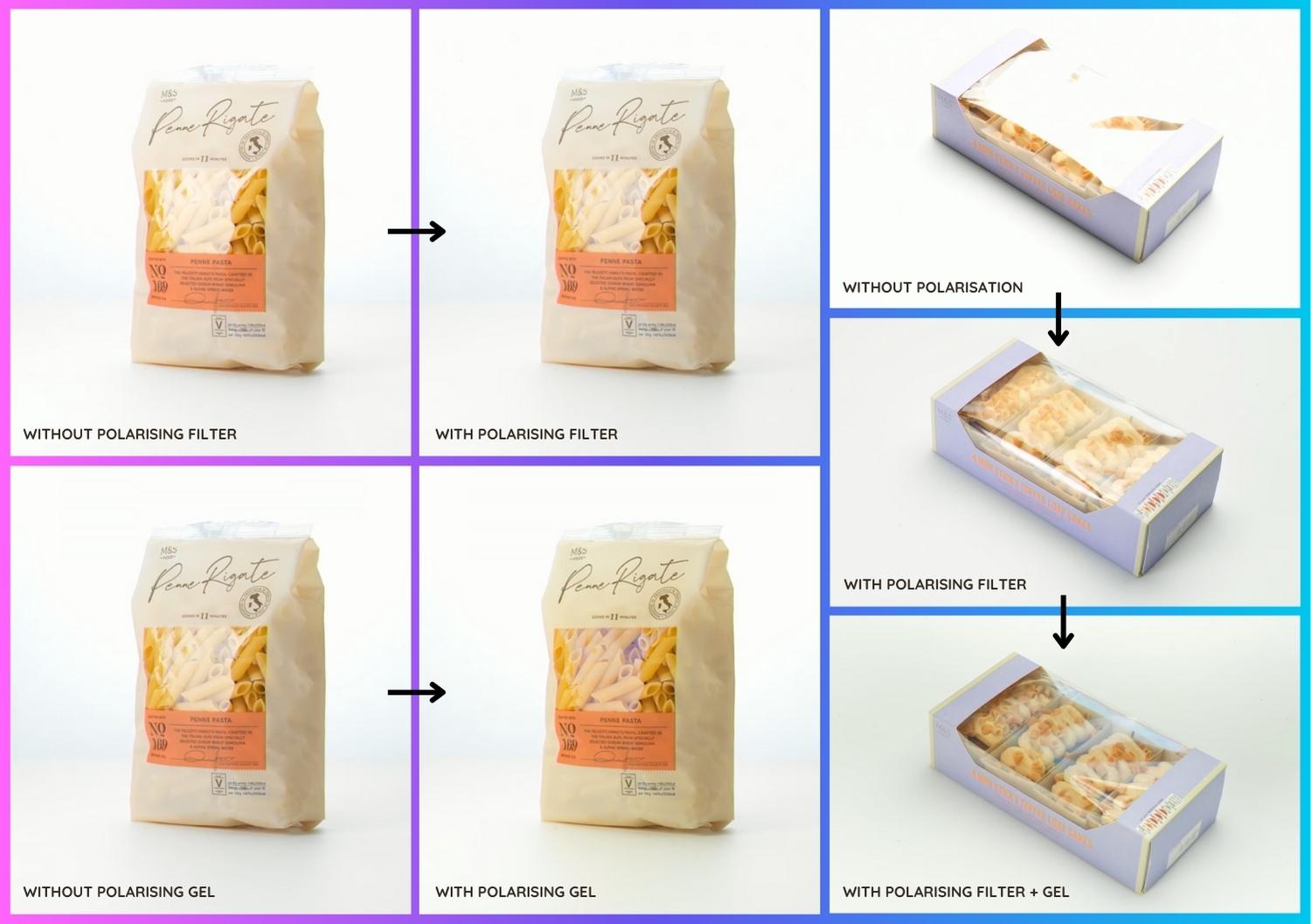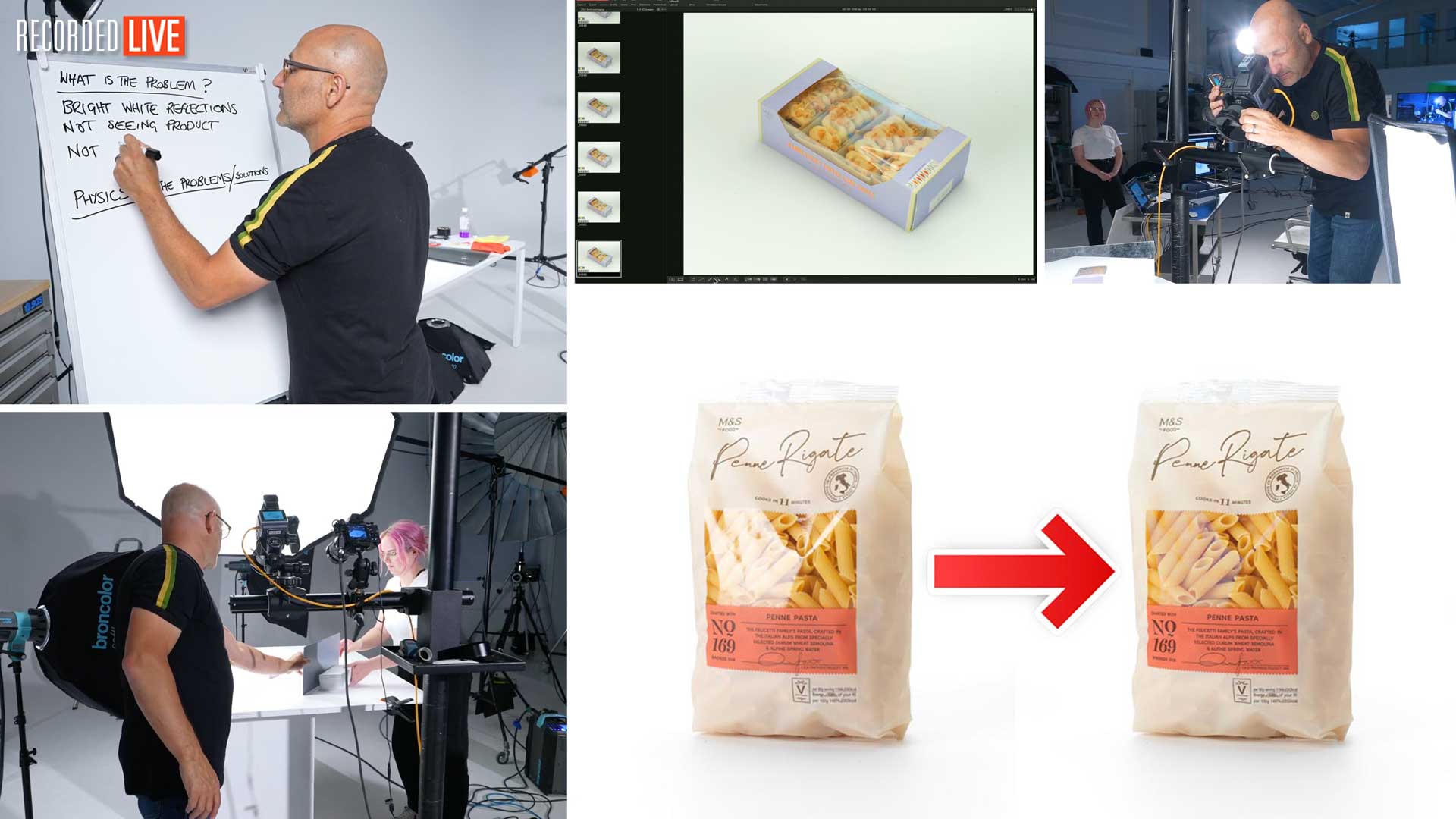Photographing Wrapped and Packaged Food
Eliminate annoying reflections and master taking photos of packaged products
Photographing food products while they’re still in their packaging might sound like a piece of cake – but if you’ve ever tried it, you’ll know it can be a real hassle! Dealing with glossy, high-shine, and crinkled surfaces, along with harsh reflections and uneven lighting, causes huge issues.
In this comprehensive class, professional photographer Karl Taylor shows you that if you know a little bit about the physics of light, you’ll be able to nail any shot of packaged food with ease! This will give you a repeatable setup that you can use time and time again with a huge range of products and packages.
In this class:
- Learn the art of food packshot photography techniques
- Understand the benefits of polarising filters
- Discover how to achieve a flawless pure white background
- Key tips on eliminating unwanted reflections for impeccable results
- Harness the potential of a softbox as a background.
Other classes that Karl refers to in this workshop include Angles of Incidence and Reflection and Polarising Light in Studio Photography.

Questions? Please post them in the comments section below.


Comments
Hi karl! fantastic show very informative as always I was wondering that as shown in your emotion of light show (not sure) you said glossy surfaces are the direct reflection of the light source thats why you pushed the large softbox very next to the model and dropped the power down which resulted in proper exposure on the skin and subtle highlights on her eyes. Can the same principle be applied over here that to bring a large softbox right next to the pasta and adjusting its power accordingly which would also illuminate the base surface which you did here with an overhead octabox. Would this lighting setup I mentioned work and if not then where lies the problem?
Hi Rik, I’m pretty sure I showed that technique in this class too?
This was very well explained and demonstrated. Thank you so much for being so thorough!
Thank you much appreciated.
Hello teacher, the polarized film is Lee Filter? Where can I buy it?
Thanks
Mattia
Hi Mattia, yes it is. Please check LEE filters website for dealers.
Thank you.
Fantastic teaching, I have learned a lot. Thanks Karl
Thank you.
When pricing out this type of pack shot do you charge more? This requires so much more specialized equipment and time. I would assume you would charge more for reflective packaging? Or is this just a “hazard” of the job.
Also, how do you remove parts of the packaging without damaging the packaging? (Thinking of the double plastic layer in particular.)
Hi, never worry about damaging the packaging, the client has lots of them and they need to know in advance that due to the difficulties involved that they will be damaged. I think any studio would have this equipment in their arsenal for this and many other types of shoots.
Hello teacher, I am a student from China, I am very depressed, why is there no Chinese automatic translation on the cc language
Hi, we are working on it.
When can I have Chinese subtitles?
Absolutely brilliant! Love your method of teaching Karl. I always learn so much and get so much inspiration.
Also love the way you get frustrated with some of the questions.
I had to laugh out loud at your comment “If you want to paint a house red, don’t use black paint”.
Pure class!
Ha ha yes I like to stick to the facts! 🙂
When can I have Chinese subtitles?
A very interesting and hugely useful lesson… I did really like it. Oh and I also did like the sound effect of the Highlight Dodge Tool 😀 anyway… thank you so much for sharing all of your experience with us!
Thank you!
LOOL @ the book.. OMG I can’t believe this question. Karl Taylor you are the book. 😀
Ha ha thank you!
You are right Karl….your platform is awesome for learning photography….never in my 2 yrs have I heard you refer to reading books….if they want to…knock their socks off….but you are very thorough on your education. So, greatly appreciated.
Thank You! I was happy to listen to this pod cast. Will review again the other polarizing classes. Especially the floor. How I wish I had this knowledge when shooting with DoorDash. I had the glare on the table. At that time I didn’t know how to get rid of that glare… but I do now, because of your platform. 😀
Thank you Karen, much appreciated!
This was so helpful Karl – you are so great at explaining complicated lightning stuff – thanks a lot for another great video 🙂
Thank you Henrik!
In the physics of the problems/solution, I think that might be useful to add also the “angle of view”(focal length of the lens). The direct reflections are formed when the light is inside the “family of angles”, which depends on the angle of view. With a longer focal length, the family of angles is narrow and there are more options to place the light outside the family of angles, making disappear any direct reflection.
Hi Filippo, yes exactly. That’s all covered in this class: https://visualeducation.com/class/angles-of-incidence-and-reflection/
Another great class from the lighting Guru. Specifically helpful about reflective shiny stuff, but also reinforced some basic lighting principles. I always find something to learn in these sessions, regardless of the particular subject theme.
Thanks David, glad you enjoyed it.